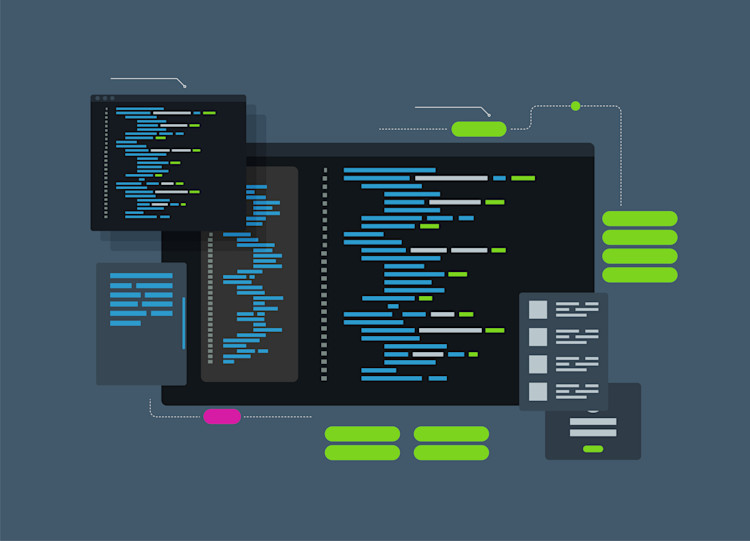Transitioning Your Development Team Without Losing Momentum
A Practical Guide for Business Leaders Managing a Development Team Handoff

Tom Cantwell, Software Engineer
Jun. 13, 2025
Picture this: You’re standing in the middle of a half-built house. The foundation’s there. Some walls are up. Maybe even a roof. But the original construction crew has packed up and left. Maybe they finished their part. Maybe they vanished mid-job. Now, a new crew is arriving, tools in hand, waiting for direction—and they’re looking to you.

This is what switching development teams feels like.
Maybe your agency’s contract ended. Maybe your in-house developer took a new role. Or maybe things just weren’t clicking with your current team. Regardless of how you got here, one thing’s clear: you’re at a critical juncture. The handoff needs to be smooth. No lost time. No blown budgets. No momentum wasted.
This guide is your blueprint for that transition. It’s designed to help you bring the new team up to speed without you becoming the translator, the project manager, and the firefighter all at once. With the right approach, your project can stay on track—and your new team can hit the ground running. This guide will help you approach a development team transition with clarity—so your new team gets up to speed quickly, your project stays on track, and you don’t have to play middleman for months.
Even experienced founders experience messy handoffs. A missing context detail today could mean an outage tomorrow.
Will it take months to onboard a new dev team? Not if your new team knows what to prioritize. At Future Foundry, we focus on extracting and providing value on Day 1.
Dev Team Handoff Checklist
☑️ Set up a shared space for direct Q&A (Slack, Notion, etc.)
☑️ Ask the outgoing team about strong spots, weak spots, and known risks
☑️ Record system walkthroughs (deployment, data flow, key tooling)
☑️ Collect all documentation—even if it’s messy or incomplete
☑️ Transfer git repositories with full commit history intact
☑️ Prioritize incremental progress over massive rewrites
☑️ Align new technical team with business goals
☑️ Ensure team stability and avoid frequent resource rotation
☑️ Confirm how the new team will work (code reviews, staging, updates)
1. Don’t Just Hand Off Code, Hand Off Confidence
A handoff isn't just about passing over files and passwords. It's about understanding how the system works and why it was built that way. The goal is to bridge the knowledge gap between teams with clear, open communication, accessible documentation, and a shared understanding of the system’s history, strengths, and weak spots.
If the previous developers are still available, set up a shared channel—Slack, Notion, or even a group email—so the new team can ask questions directly. Then prompt the outgoing team with questions like:
What parts of the system are working well?
What areas are fragile or incomplete?
What decisions do you feel confident—or uncertain—about?
Even one or two honest conversations can save your new developers weeks of confusion.
At Future Foundry, we work with the outgoing team to create comprehensive documentation within two to four weeks of engagement.
2. Capture Knowledge Before Access Expires
Before the old team disappears, schedule a few live walkthroughs. These are your best shot at transferring institutional knowledge that doesn’t live in the code.
Ask them to explain how key parts of the system work, including:
How new updates are deployed
Where user data lives
Which tools are used for monitoring or tracking issues
Record these sessions. You might not need them now, but future developers will thank you.
We use tools like Fathom Notetaker to record these types of meetings so we can access them easier and have notes for reference.
3. Ask for Everything (Even the Mess)
Some teams leave pristine documentation. Others… not so much. Either way, ask for:
Open tasks or unresolved bugs
Monitoring tools (e.g., Sentry, New Relic, Datadog)
Infrastructure or hosting details
Architecture diagrams, config files, or even rough notes
Even a half-finished checklist helps your new team avoid nasty surprises later.
At Future Foundry, we audit the existing documentation exists and flag gaps for immediate or later improvement.
🚩 Red flag: If the outgoing team says, “Everything’s working fine,” that’s often a sign that known issues have just been worked around, not fixed.

4. Don’t Let the Commit History Get Wiped
This one’s slightly technical, but important: Don’t lose the version history of the code.
Sometimes a new team will re-upload the codebase as a fresh project. It feels cleaner—but it erases the entire commit log, which is where a lot of engineering decisions live.
That log tells the story of what was tried, what was changed, and why. It’s a timeline of how the product evolved—and it can be critical when debugging or auditing later.
If you’re moving to a new repository, make sure your developers preserve the full commit history.
5. Product Thinking Beats Big-Bang Launches
Inheriting a product isn’t just about learning how it works—it’s about understanding why it was built that way. A smart transition aligns technical execution with product strategy, especially when a product is already live.
It’s tempting to treat a handoff as a chance to rebuild or launch a “Version 2.” But those big-bang relaunches come with steep costs: surprise bugs, painful QA cycles, and long delays.
At Future Foundry we help you get to profitability faster by being able to move with what exists.
Instead of an overhaul:
Prioritize incremental progress—small wins compound faster than rewrites, unless the code is in complete dissarray
Create clarity in the roadmap—define what’s next, what’s blocked, and what’s “nice to have.”
Keep stakeholders in the loop—demo early and often to show momentum and gather feedback.
You can still market a new version when the time is right. But behind the scenes, development should stay steady, focused, and value-driven.
We run weekly demos for stakeholders and share a one-pager on sprint goals—so everyone knows what’s happening.
💡 Pro Tip: Developers do their best work when they understand the business. Share the “why” behind past product decisions—especially with product-minded engineers who want to build things that matter.
🚩 Red flag: Beware of rigid, waterfall-style teams. If they resist iteration or discourage frequent feedback, it may slow you down just when you need to move fast.

6. Technical Judgment Starts With Stable Teams
Clean architecture is great—but only if your team has the stability and experience to make the right tradeoffs. Chasing ideal solutions too early, without understanding the cost of change, leads to wasted time and budget.
Some things to keep in mind:
Switching costs are often underestimated. A new stack or tool might seem better—but how long will it take to truly replace the old one? What hidden dependencies might break?
Understand historical context. Was that “hacky” workaround a quick fix—or a workaround for an expensive limitation?
Invest in long-term ownership. Look for a team that won’t rotate developers every few months. Institutional memory builds judgment.
Teams that stick around learn to tell the difference between opinion and impact. They avoid needless rewrites, make pragmatic choices, and build systems that serve both the codebase and the business.
🚩 Red flag: Beware of new teams that insist on changing the stack drastically. If that is the right decision, there should be very good reasons laid out for doing so. An efficient team will make use of existing tools instead of trying to write everything themselves from scratch. The exception being if the codebase is irreparable
Final Thought: You’re a Facilitator, Not a Translator
As the client, you shouldn’t have to translate between your old and new teams. Your role is to create space for information to flow—not to hold it all together yourself.
Set up the calls. Encourage openness. Push for documentation. Then trust your new team to ask the right questions and build on what came before.
Because when a handoff is handled well, it doesn’t just preserve momentum—it builds it.
We’ve helped multiple clients transition dev teams with minimal disruption. Want to talk through yours? Schedule a free transition planning call.